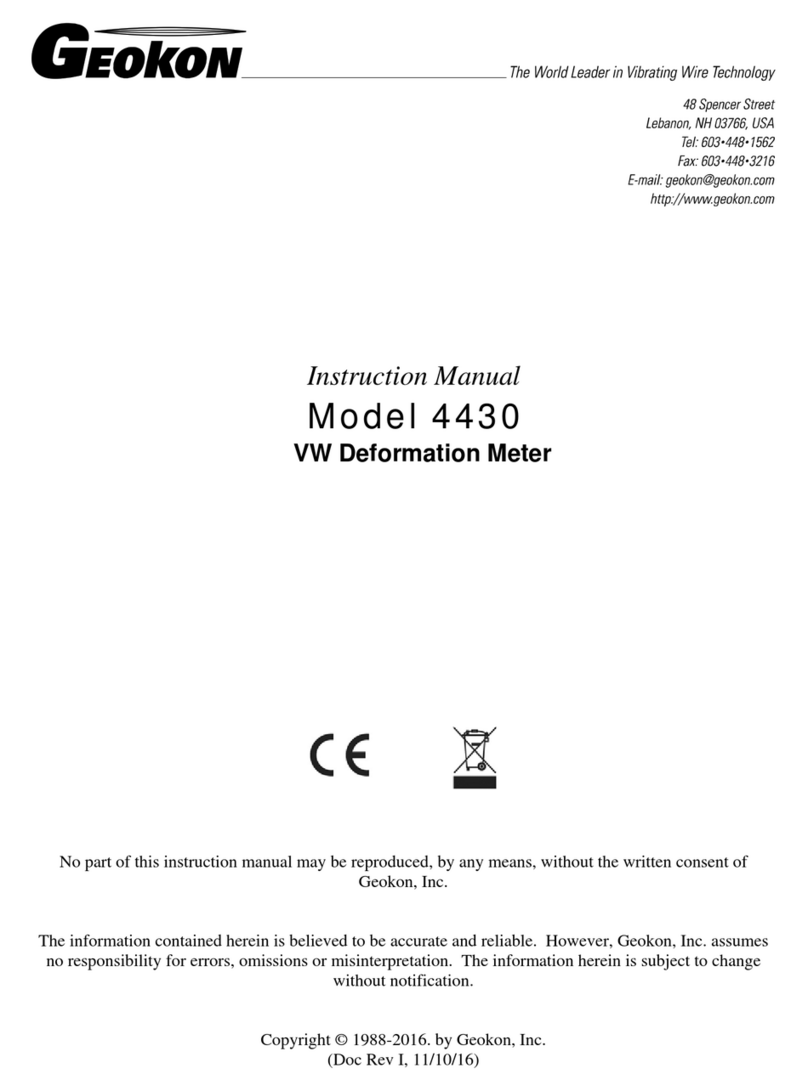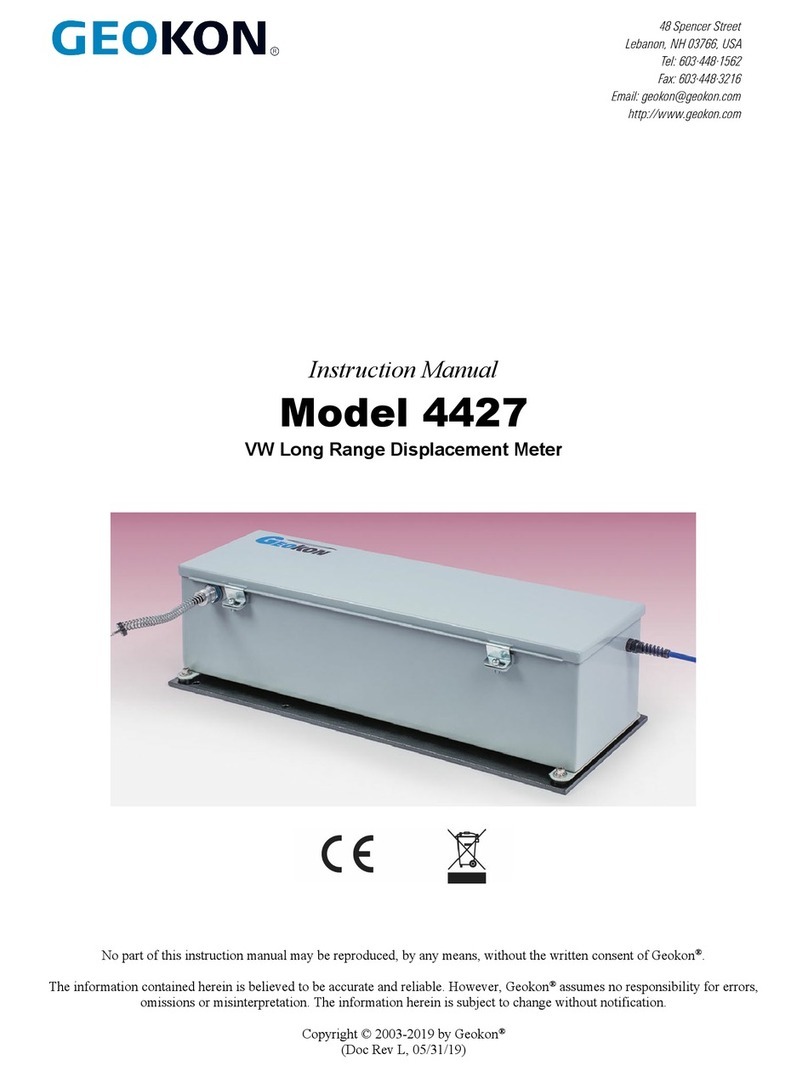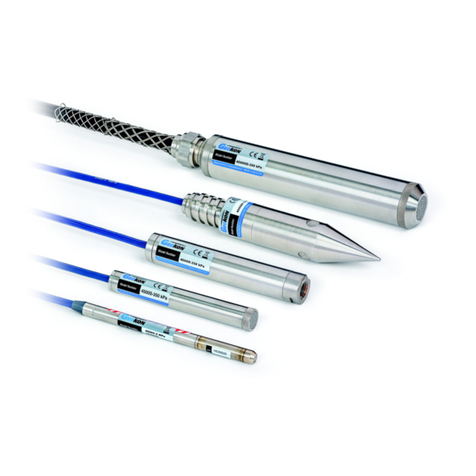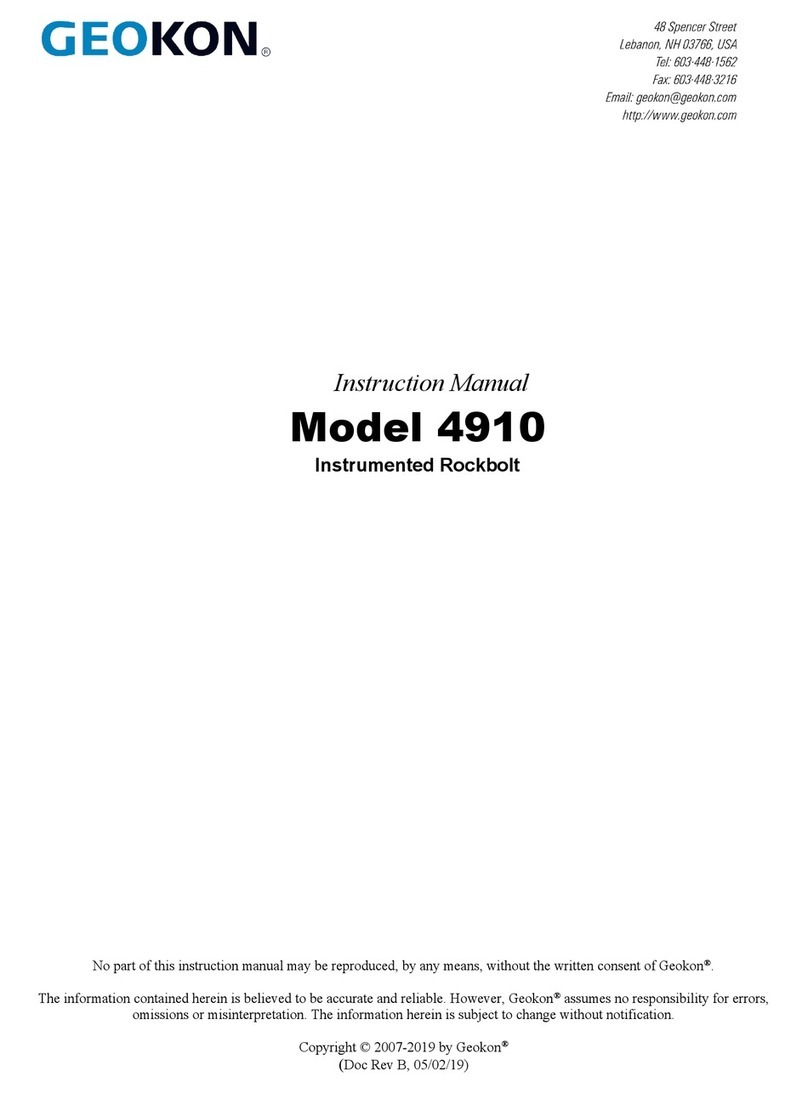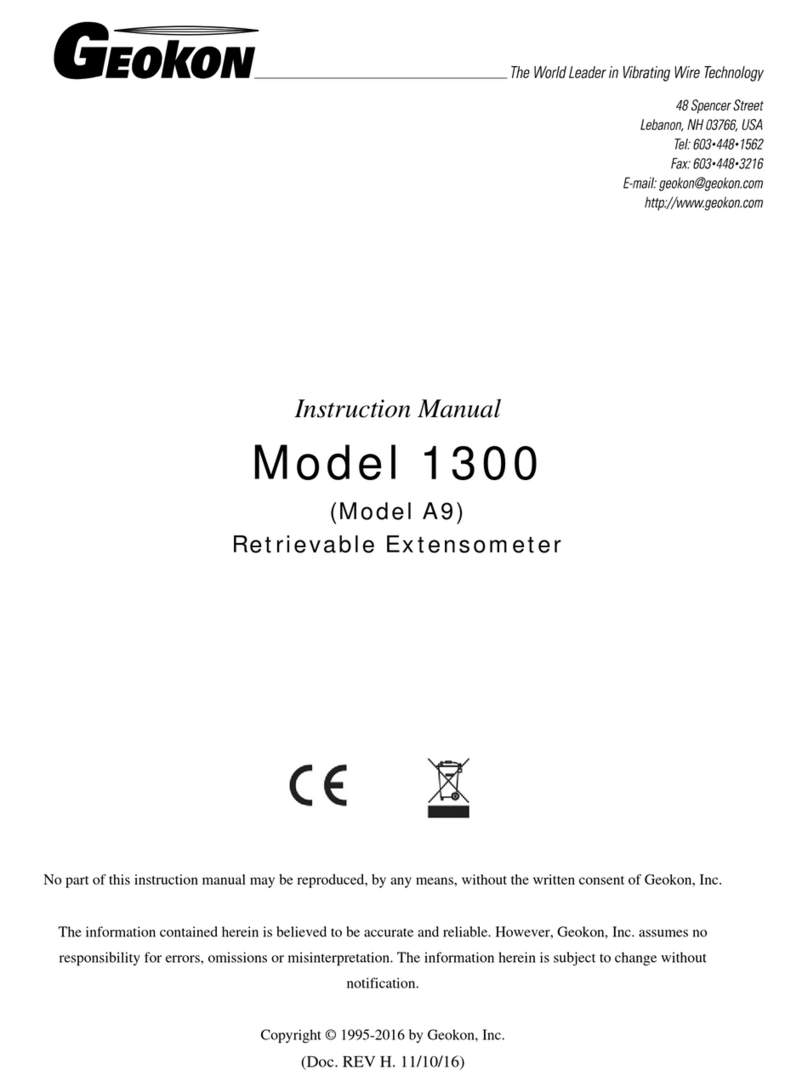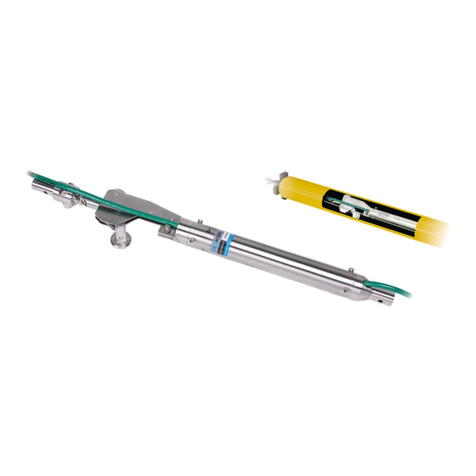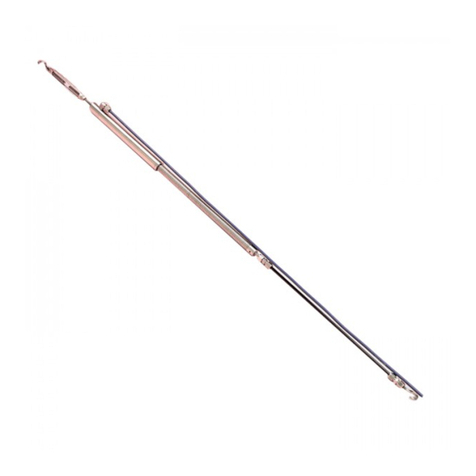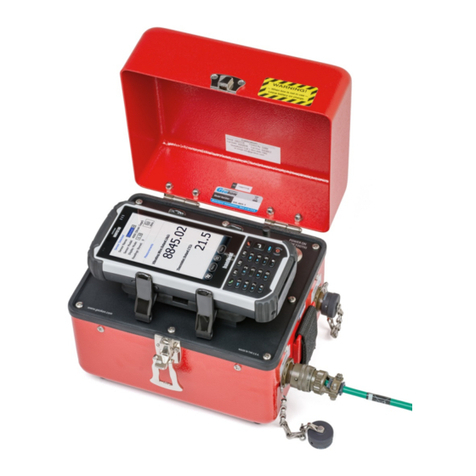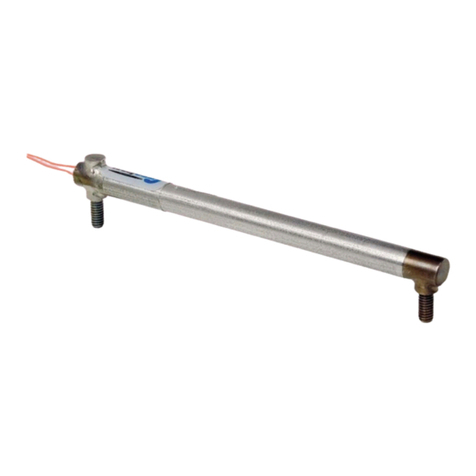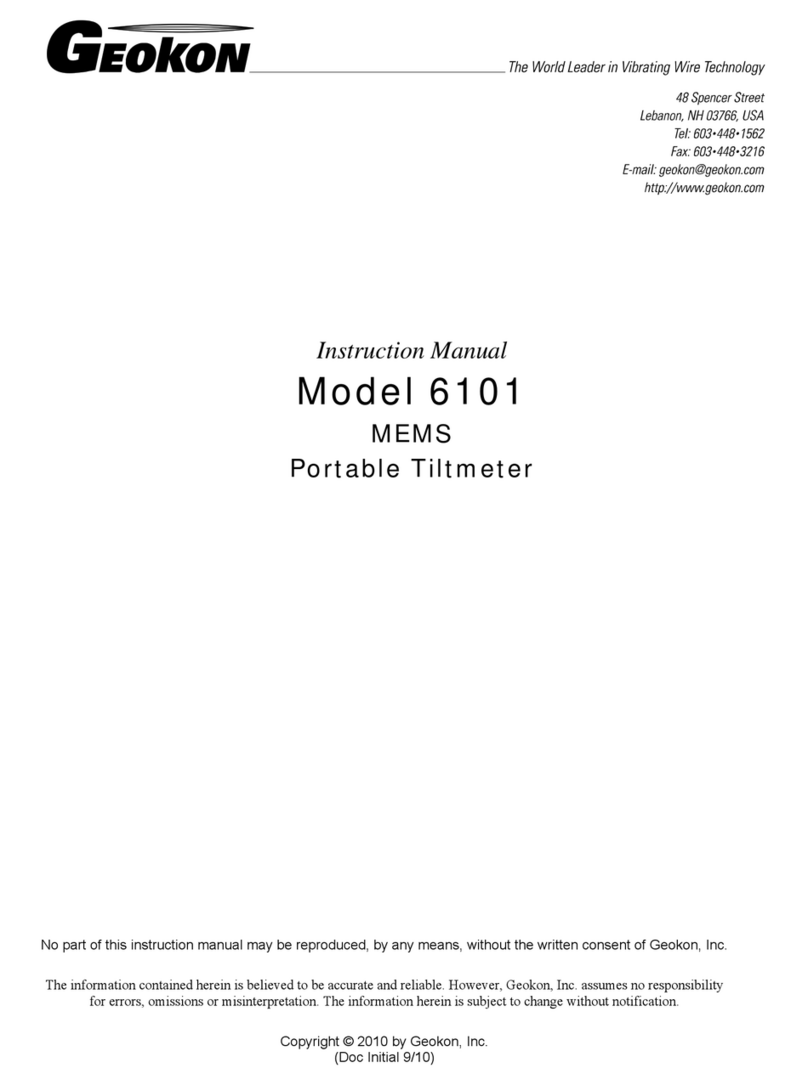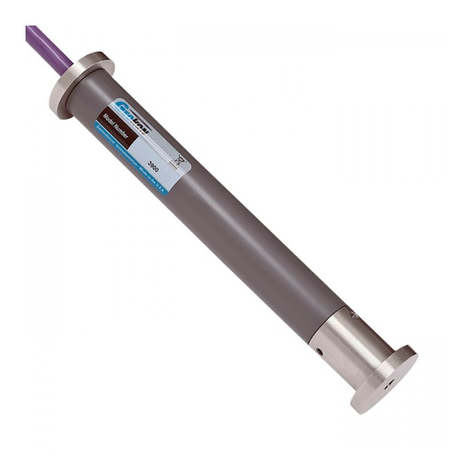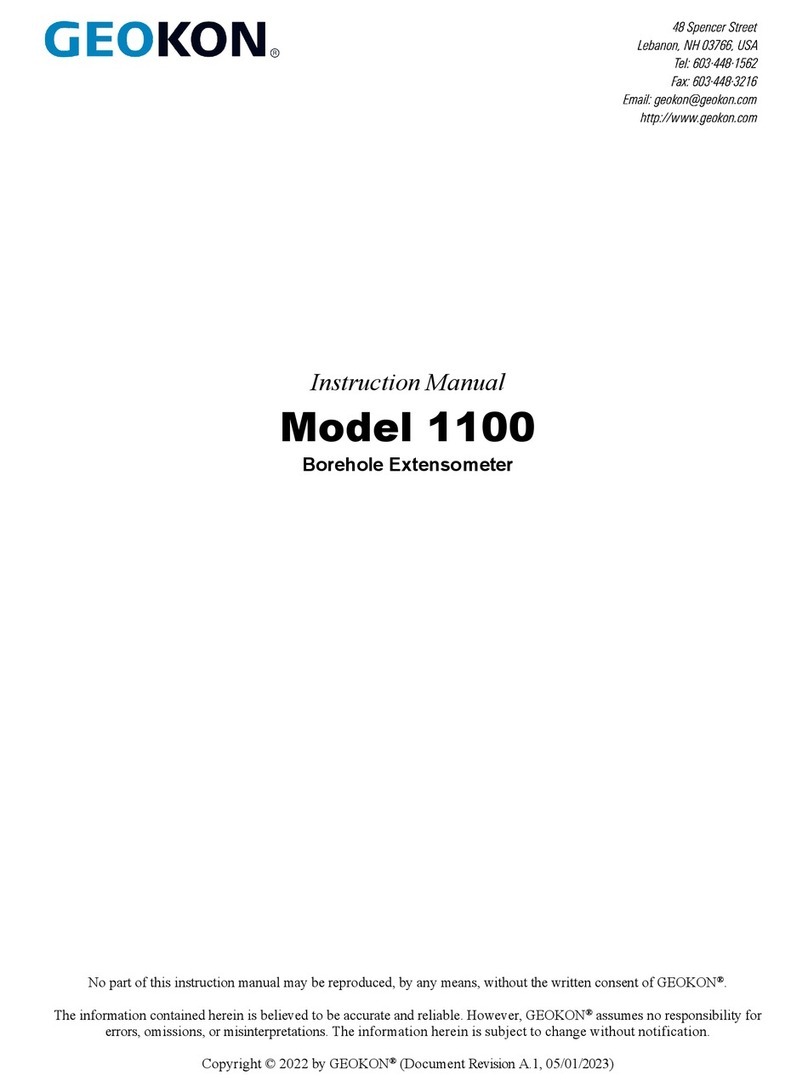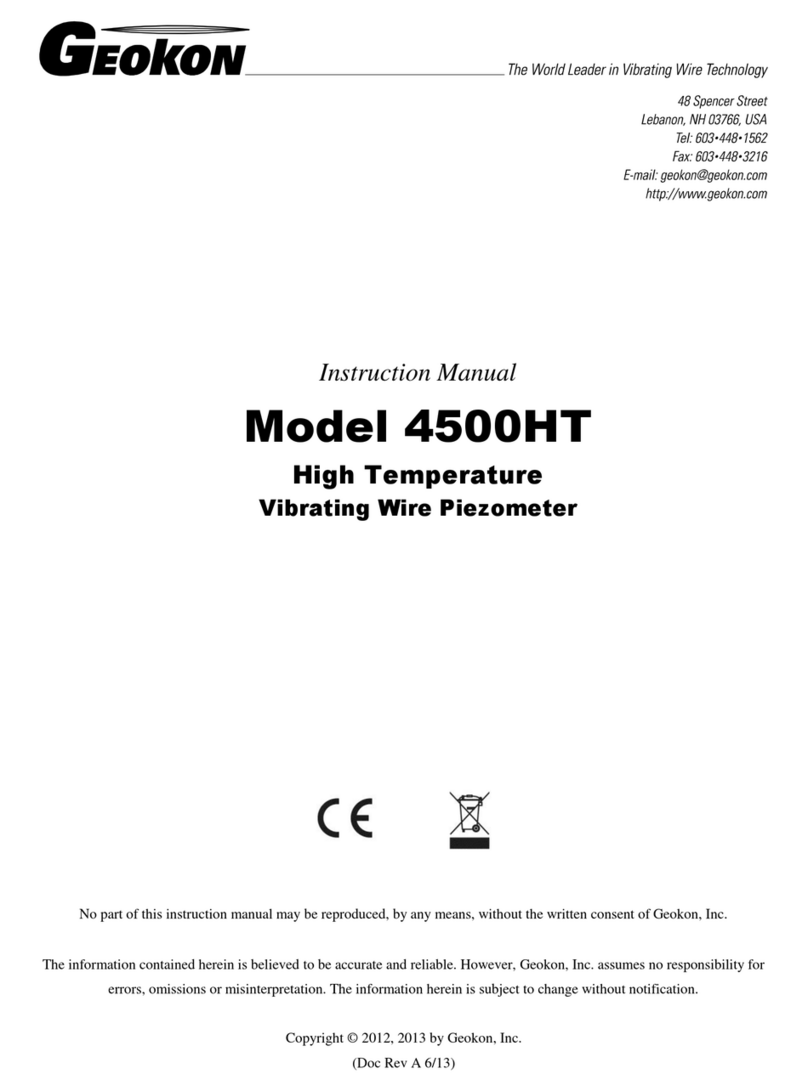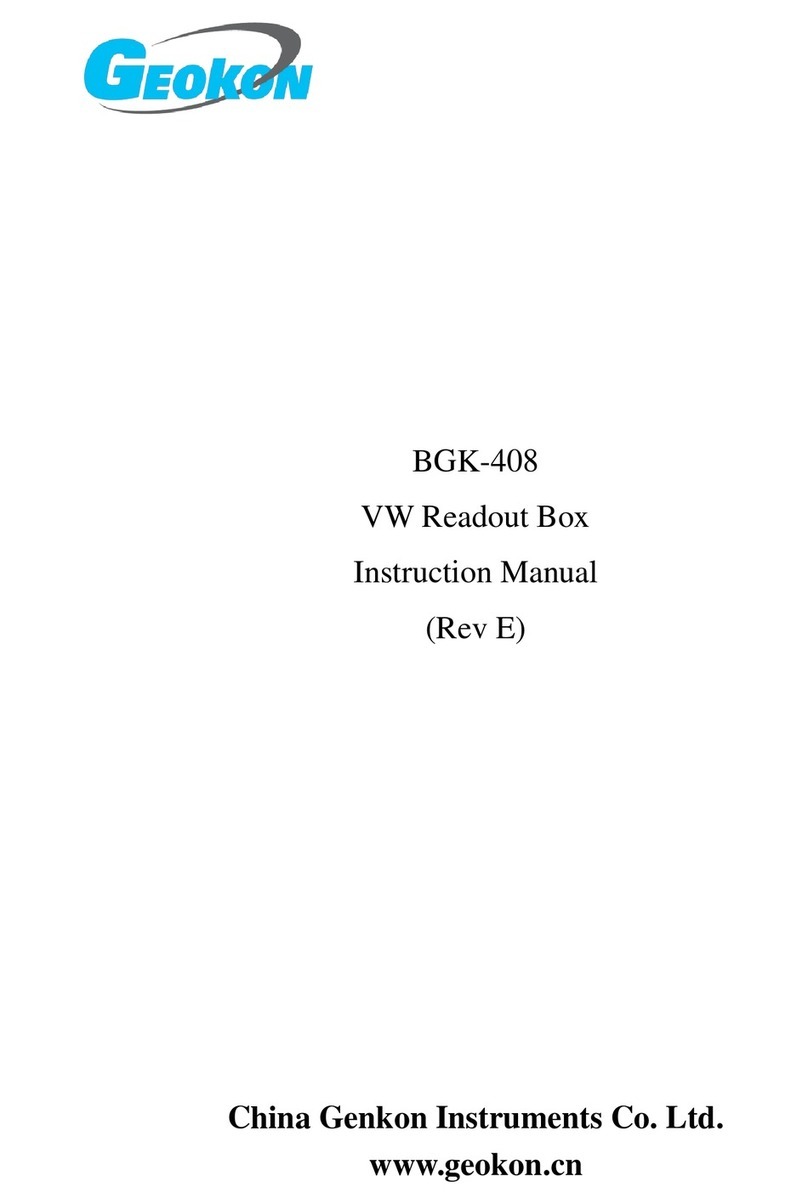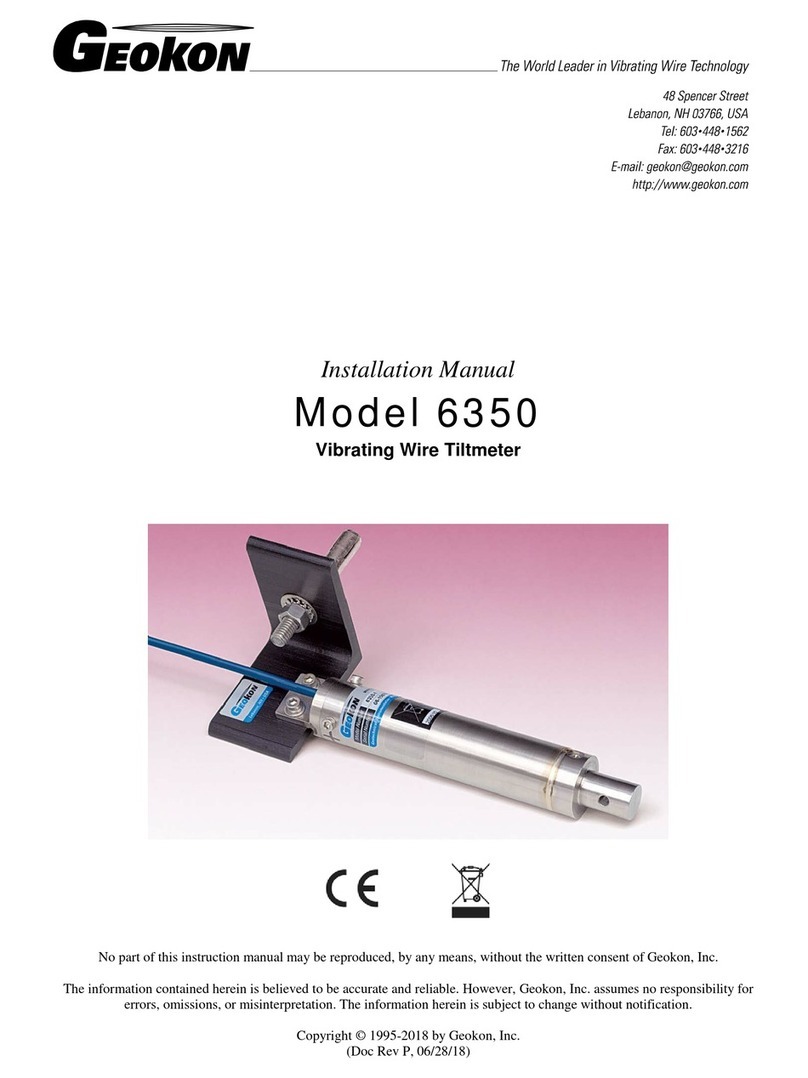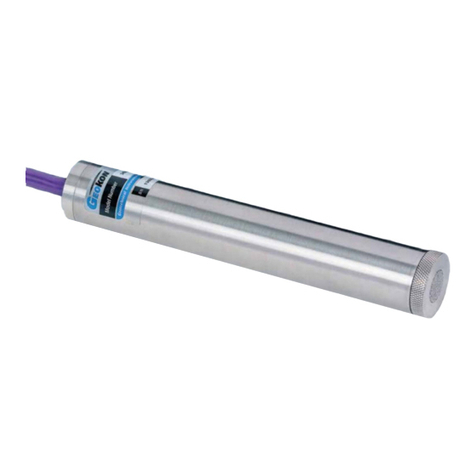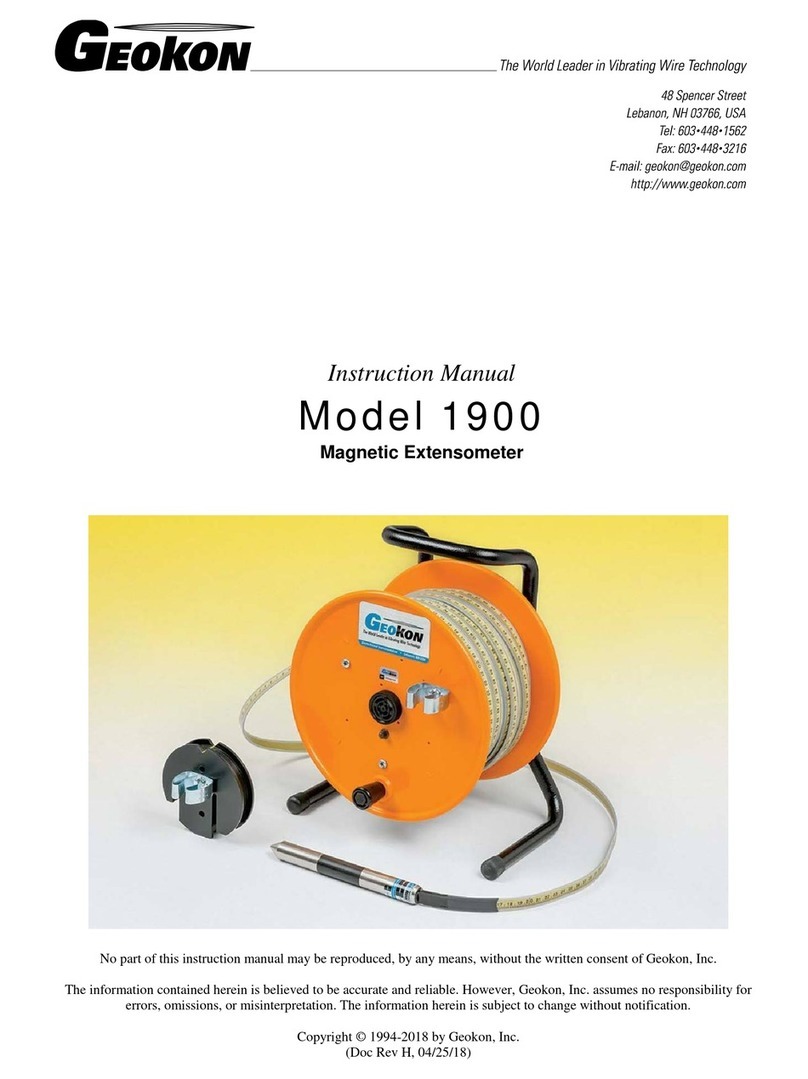
10
3.5 Electrical Noise
Care should be exercised when installing instrument cables to keep them as far away as
possible from sources of electrical interference such as power lines, generators, motors,
transformers, arc welders, etc. Cables should never be buried or run with AC power lines. The
instrument cables will pick up the 50 or 60 Hz (or other frequency) noise from the power cable
and this will likely cause a problem obtaining a stable reading. Contact the factory concerning
filtering options available for use with the Geokon dataloggers and readouts should difficulties
arise.
3.6. Lightning Protection
The Model 4427 Vibrating Wire Long Range Displacement Meter, can be supplied with integral
lightning protection components, i.e. transzorbs or plasma surge arrestors. If the instrument
cable is exposed, it may be appropriate to install lightning protection components, as the
transient could travel down the cable to the gage and possibly destroy it.
Note the following suggestions;
If the gage is connected to a terminal box or multiplexer components such as plasma surge
arrestors (spark gaps) may be installed in the terminal box/multiplexer to provide a measure
of transient protection. Terminal boxes and multiplexers available from Geokon provide
locations for installation of these components.
Lighting arrestor boards and enclosures are available from Geokon that can be installed
inside the enclosure. The enclosure has a hinged lid, so, in the event the protection board
(LAB-3) is damaged, the user may service the components (or replace the board). A
connection is made between this enclosure and earth ground to facilitate the passing of
transients away from the gage. See Figure 3. Consult the factory for additional information
on these or alternate lightning protection schemes.
Alternatively, plasma surge arrestors can be included inside the enclosure close to the
sensor. A ground strap would connect the surge arrestor to earth ground, either a
grounding stake or other suitable earth ground.
Terminal Box/Multiplexer
Instrument Cable LAB-3 Enclosure LAB-3 Board
Model 4450 Transducer
Ground Connections
Surface
(usually buried)
(inside extensometer housing)
Extensometer
Figure 6: Lightning Protection Scheme
